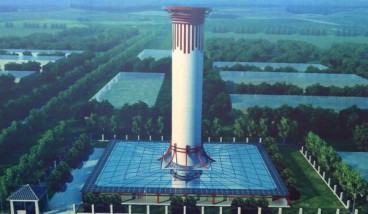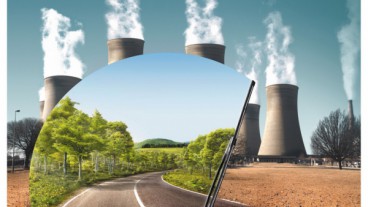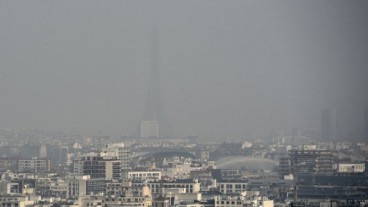
The black veil of air pollution in the industrial valley of Sichuan seems that have played a key role in the deadly flood of 2013, which was the worst that China had ever lived during the last 50 years.
The black veil of air pollution in the industrial valley of Sichuan seems that have played a key role in the deadly flood of 2013, which was the worst that China had ever lived during the last 50 years. A new study that was published in the journal ‘Geophysical Research Letters’ warns that in fact, the same phenomenon that hit Sichuan threatens potentially other basins that host heavy industry.
In July 2013, the mountains of Sichuan received 73 centimeters of rain over five days, with rain reaching a peak of 29 centimeters per day. The rivers overflowed and flowed to cities; steep slopes collapsed and caused landslides. About 200 people died and 300,000 or more were forced to leave their homes.
Jiwen Fan, atmospheric scientist and lead author of the study at Pacific Northwest National Laboratory in Washington, wondered whether air pollution may have played a role. She says that the Sichuan Basin is notorious for smog from industrial zones, which is trapped by a mountain wall. ‘We found a mechanism that could escalate a normal storm event to a severe weather event, particularly in downwind mountainous areas where storms can be triggered by the topography,’
The interaction between aerosols has shown that the carbon black particles can limit or delay the rain.
The study of Jiwen Fan and her team has shown for the first time that air pollution may affect air circulation by changing indirectly patterns of rainfall.
The research team tried two different simulations of the Sichuan meteorological system during the days of flooding. The first simulation took into account the existence of air pollution, while in the second air remained clean as it was 40 years ago, before the industrialization of Sichuan.
In the model of clean air, the sun warms the moist air that covers the ground. Consequently, the humidity goes high in the atmosphere and being cooled abruptly and returns to the soil as a mild rain during the day.
In the model of air pollution, the situation changes: the black veil of pollution hides the sun and prevents the heat of the moist air in the soil, which thus remains trapped within the basin. At night, however, moist air moves north towards the Longmen Mountains. The moist air hits the slopes, and after that it is cooled and falls as torrential rain.
This means that rain that would fall gradually throughout the day, fell due to air pollution within a few hours and even concentrated in the mountains.
Dr. Fan believes indeed that air pollution should be taken into account from the weather forecasts. In China, she points out that the weather forecast gives "alarmingly wrong" predictions on the intensity and location of storms.
Source: phys.org
Source: phys.org
Want to read more like this story?

What the new ‘Air Quality Atlas for Europe’ reveals
Feb, 05, 2018 | NewsThe sources and levels of air pollution in Europe have been mapped The sources and levels of air po...

This artificial tree captures air pollutants 275 times more efficiently than a normal one
Aug, 10, 2017 | NewsIt was developed by a German start-up in order to fight air pollution It was developed by a German...

Indoor pollution: a widely overlooked problem
May, 10, 2016 | NewsScientists propose the use of real-time sensors of indoor air-quality for the battle against the Sic...

China is winning the fight against air pollution
Mar, 30, 2018 | NewsIf the trend continues, the average Chinese citizen will see their life expectancy increase by 2.4 y...

Google Street View cars used for high-resolution air pollution mapping
Jun, 12, 2017 | NewsThis new approach towards urban air pollution mapping offers much greater spatial precision in compa...

A smog free tower purifies polluted air and turns it into jewelry
Aug, 10, 2016 | NewsThe ‘green’ appliance which turns human-created carbon dioxide and carbon monoxide into...

World’s largest air purifier is undergoing testing and will soon start operating in China
Feb, 13, 2018 | NewsPreliminary results suggest it has already helped reduce smog levels in Xian Preliminary results su...

Stricter new limits approved by the EU to drastically cut air pollution
Dec, 27, 2016 | NewsThe new directive will enter into force on 31 December 2016 The new directive will enter into for...

Paris Limits Driving to Curb Air Pollution
Mar, 23, 2015 | NewsAfter a major spike in air pollution earlier this week, Paris city mayor Anne Hidalgo asked authorit...
Trending

Vertical gardens in Mexico City to combat pollution

Saudi Park Closed After 360 Big Pendulum Ride Crashes to Ground, 23 injured

Characteristics of Load Bearing Masonry Construction

Taipei 101’s impressive tuned mass damper

Dutch greenhouses have revolutionized modern farming

Federal court rules Biden’s offshore drilling ban unlawful


